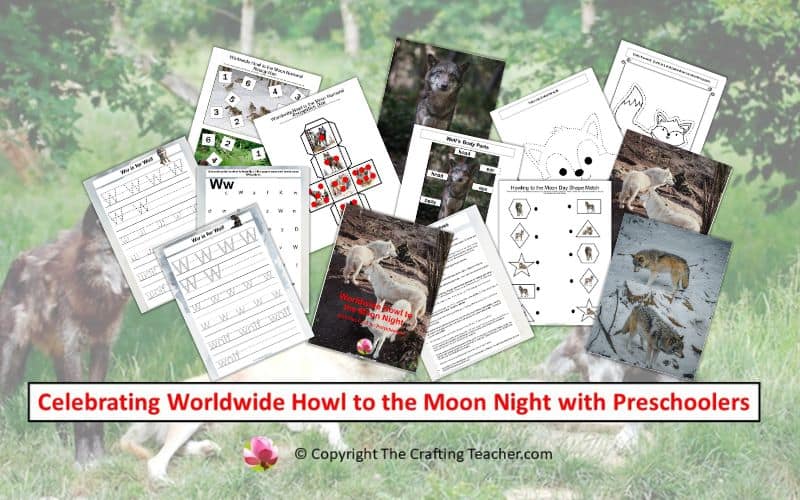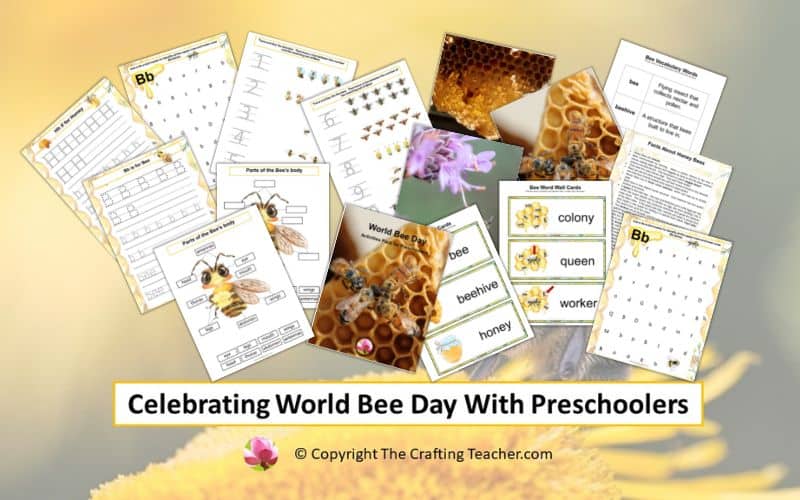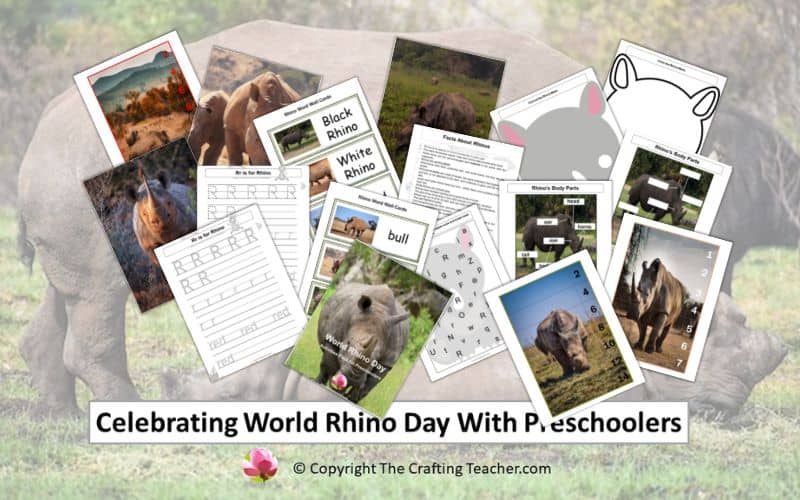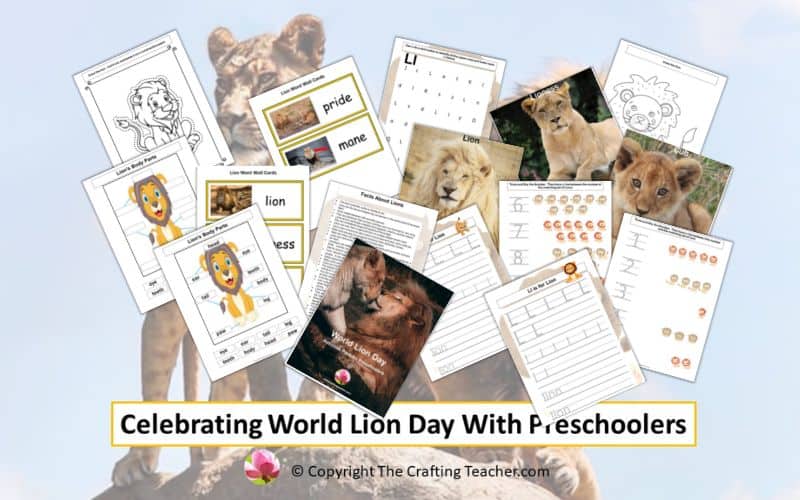Celebrating Worldwide Howl to the Moon Night With Preschoolers
Affiliate Disclosure: “This post contains affiliate links, which means I receive a small commission, at no extra cost to you, if you make a purchase using those links.”
Worldwide Howl at the Moon Night is celebrated on October 26, mainly to create awareness about the wolf, considered the non-domesticated defender of the wild, and the groups of conservationists that work to protect it. Wolves don’t really howl at the moon, but this day is also used to create fun events in many cities for groups of people who howl at the moon.
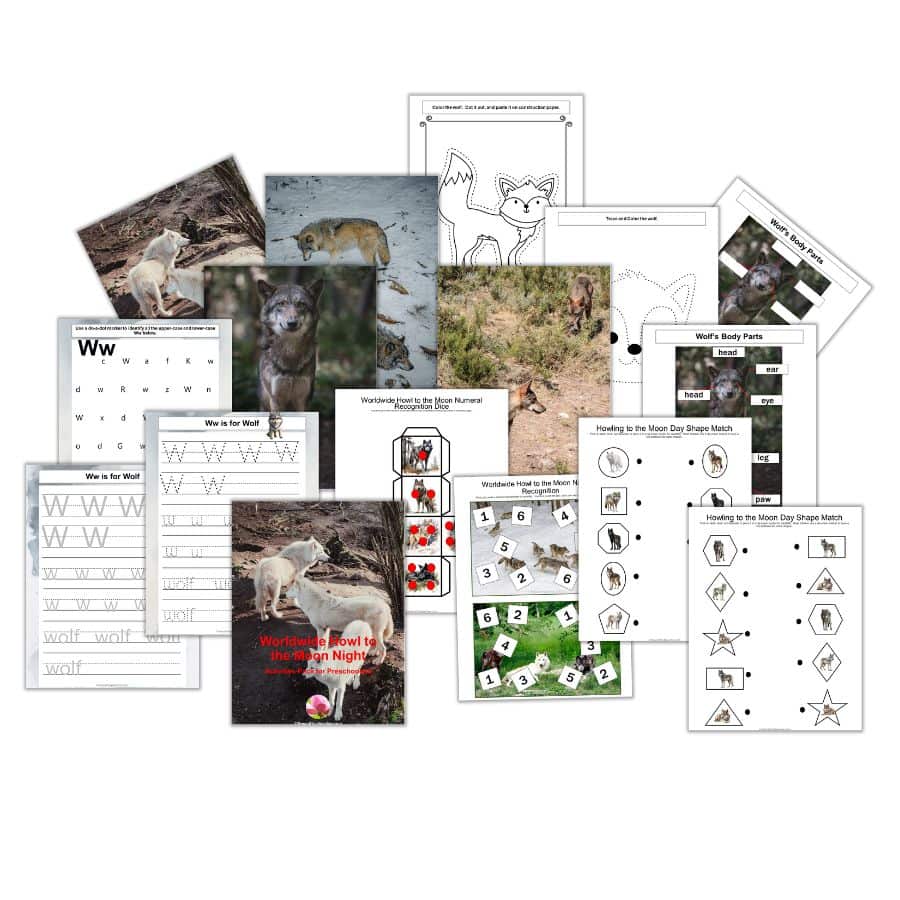
I have included a FREE 19-page long Worldwide Howl to the Moon Night activities pack that includes Literacy, Science, Math, and Fine Motor activities for your preschoolers, which can be downloaded at the end of this post.
History of the Worldwide Howl to the Moon Night
This holiday was founded in 2009 by Johnny DePalma, author and animator. DePalma first called it “The Planet Wide Moon Howl Event”, also identified as the Howl at the Moon Day.
This celebration created a great opportunity for organizations to spread awareness of wolf conservation, using programs and activities worldwide to inform people that they can promote wolf conservation and protection.
One of these organizations is called Wolf Haven International, which provides a safe sanctuary for captive-born, injured, and displaced wolves.
Facts About Wolves
- Wolves have been on Earth for over 1.5 million years!
- Wolves are mammals that are related to coyotes, dogs, dingoes, and jackals.
- They’re the largest members of the Canid (dog) family. Fully grown males reach 30 inches and weigh up to 200 pounds. Females are 20 percent smaller.
- Wolves can go days without food, but they are mostly carnivorous. They hunt elk, deer, moose, and bison in packs. They also eat smaller animals like squirrels, foxes, beavers, rodents, birds, and hares, and fruits like berries, apples, and pears. They can also go days without food.
- Most wolves are nocturnal, hunting at night and sleeping during the daytime.
- Wolves have 42 sharp teeth and powerful jaws.
- They also have strong bodies, which are covered by grey, brown, black, reddish or white fur.
- Wolves have long snouts, pointed ears, and long, bushy tails. They also have excellent eyesight, hearing, and smell.
- Wolves communicate by scent-marking, through different body postures, by nuzzling each other, and by barking, growling, and howling lifting their chins to project the sound up to 10 miles away.
- Wolves can travel up to 100 miles in a day. They can run up to 38 miles per hour over short distances.
- They’re intelligent social animals who live in close families, called packs, for their whole lives. A pack has a female and male leader, called the “alphas”.
- The male leader protects the territory and the pack, fighting off other wolves from outside the pack and intruders.
- The alphas always eat first and are the only ones that have babies, called pups. A female can have 4 to 6 pups at a time, in a hole in the ground or a cave called a den. A group of pups is called a litter.
- On average, wolves can live 6 to 8 years in the wild and 17 years in captivity.
- Wolves have some predators like bears which kill wolf pups if there is a dispute over territory, or over a carcass and leopards; nevertheless, humans are their main threats and predators, because they them for sport and to protect livestock.
- Wolves were hunted and killed almost to the point of extinction in the United States. In fact, the red wolf was extinct, except for a few that lived in reserves. Today, there are over 18,000 in the US with over two-thirds found in Alaska.
- Ethiopian wolves are endangered due to the loss of their habitat.
- According to the International Union for Conservation of Nature, it’s estimated that there are over 300,000 wolves around the world.
How to Celebrate Worldwide Howl to the Moon Night
Here are some ideas on how to celebrate this holiday with your preschoolers:
- Create a lesson plan to teach your preschoolers about wolves and their importance in a balanced ecosystem, and imprint in them the love for these magnificent mammals, so they become their defenders.
- Use your social media platform to spread the word, and invite your families to do the same. Some of the hashtags you can post are #WorldwideHowlAtTheMoonNight, #HowlAtTheMoonNight, and #HowlAtTheMoonDay.
- Organize a fundraiser at your school or with your friends to donate to any organization protecting these animals such as Wolf Haven and/or become a member to support people who rescue and care for the wolves, as well as the animals themselves.
- Invite your preschoolers to dress as wolves or with wolves-inspired clothes on Worldwide Howl to the Moon Day, and have a parade around the school or your neighborhood.
- Organize a field trip to your local zoo or wolf sanctuary to observe the wolves, or invite your families to go on their own and do the same.
- Use your social media platform to promote wolf conservation, and invite your families to do the same.
- Have your preschoolers do wolf-related crafts, like the ones offered by Simple Mom Project on Pinterest.
- Invite your preschoolers to make wolf masks and to move as one. You can find a free template at itsybitsyfun.com.
- Read a book about wolves and invite your preschoolers to draw their favorite part of the story or character, or create a group story about a wolf to turn into a book for your library.
- Show your preschoolers videos about wolves in their natural habitats. Some good ones you can use are Wolves 101 by National Geographic, and Hunting with the Dark Wolf by Nat Geo Wild.
- Finally, go wild! Gather some of your family or friends and build a campfire in the forest or your own backyard and have fun howling at the moon.
Books About Wolves
Read books about wolves to your kiddos, to reinforce your lesson and plant in them the love for and desire to help these amazing creatures, as they get older.
Many books address elephants, both fictional and non-fictional. You can find these books at your local library, used book store, and on Amazon. These are some of my favorites. You can get them very easily by just clicking on the links, which have my special links embedded in them and will take you directly to Amazon’s page.
- Little Wolf First Howling by Laura McGee Kvasnosky. This is a wonderful story about the importance of doing things your own way and being true to your heart when it swells with wildness and joy.
- Wolves by Busy Hands Books. The real photos in this book will help your children develop observation skills, language skills, vocabulary, color recognition and so much more!
- Wolves by Tristan Walters. This book is perfect for children who have a passion for learning about wildlife and a special interest in these deadly predators, using amazing photos and fascinating facts.
- National Geographic Readers: Wolves by Laura Marsh. Full of incredible photographs and interesting information, this book will teach children that there’s much more to being a wolf than most people could ever believe.
- Grey Wolf by Tyler Grady. This book will teach children about the amazing and highly social gray wolf, habitat, diet, breeding, lifespan, behavior, threats, and much more, using beautiful color photography.
- National Geographic Kids Mission: Wolf Rescue by Kitson Jazynka. With fun and amazing adventure stories, gorgeous photography, hands-on activities, and fascinating information, this book taps into kids’ interest in animals and their passion for saving them.
- Journey by Emma Bland Smith. Using facts recorded by Fish and Wildlife scientists, the author imagines the wolf’s experiences in close detail as he makes an epic 2,000-mile trek over three years.
Pin It For Later
If you are in a rush and don’t have time to read the post and download the printable but want to save it for later, pin it to one of your Pinterest boards.

I hope you enjoy these ideas, and help you have fun during the Worldwide Howl to the Moon Night celebration with your preschoolers. To get the FREE pack, you just have to click on the link below and put your information, for an immediate download.
Be happy, safe, and creative. I wish you well.
Love,

P.D. Please let me know if any of these ideas worked for you, and what other activities you did to teach your preschoolers about the wolf.

